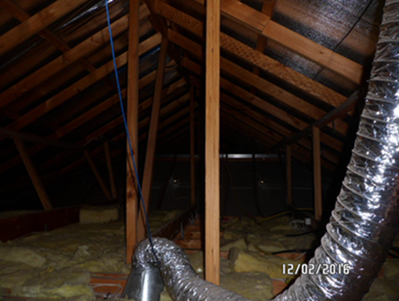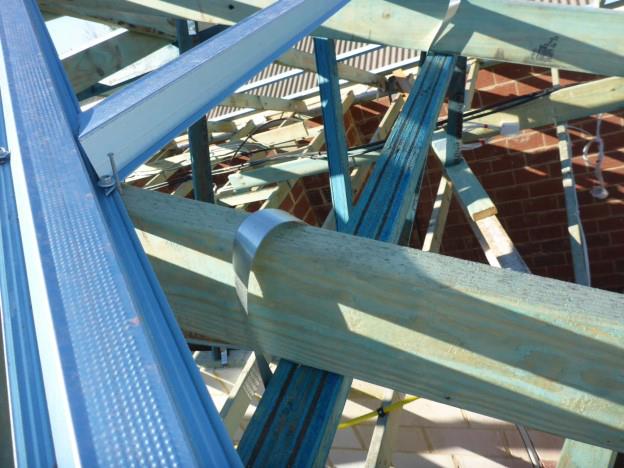
Weep Holes - Where Tears Come From?
By HOUSPECT WA Building Inspections|September 21, 2016
Have you ever looked at an external wall on a property and noticed that around the perimeter of the property, just above the ground and or above the windows and doors, there are little holes in the walls at regular intervals? No need to weep if they are there – these are weep holes! If they’re not there, you may need to weep!
Houspect WA Building Inspectors will call out the lack of weep holes in our Pre-Purchase Building Inspections Reports and/or our Houspect Construction Reports as a significant building defect – but not a structural defect!
What Are Weep Holes?
A weep hole is a small opening that allows ventilation and water to drain from a wall cavity. The states: “Australian Standards 3700 – 2011 Section 4.7.2: Weep holes shall be provided wherever it is necessary to drain moisture from or through masonry construction. Where flashings are incorporated in the masonry, weepholes shall be provided in the masonry course immediately above the flashing, at centers not exceeding 1200mm.”
Have you ever looked at an external wall on a property and noticed that around the perimeter of the property, just above the ground and or above the windows and doors, there are little holes in the walls at regular intervals? No need to weep if they are there – these are weep holes! If they’re not there, you may need to weep!
Houspect WA Building Inspectors will call out the lack of weep holes in our Pre-Purchase Building Inspections Reports and/or our Houspect Construction Reports as a significant building defect – but not a structural defect!
What Are Weep Holes?
A weep hole is a small opening that allows ventilation and water to drain from a wall cavity. The states: “Australian Standards 3700 – 2011 Section 4.7.2: Weep holes shall be provided wherever it is necessary to drain moisture from or through masonry construction. Where flashings are incorporated in the masonry, weepholes shall be provided in the masonry course immediately above the flashing, at centers not exceeding 1200mm.”
What Do They Look Like?
What Do They Do?
Weepholes do two very important things.
But Why?
Brick is not a waterproof covering for a property. In contrast, because brick (and stone) is a porous material it actually behaves much like a sponge. During a rain event, the masonry wall absorbs water and stores it. As indicated above, the weep hole is designed to facilitate ventilation and drainage.
Are Weep Holes in Every Property?
Yes – and no. Yes, they are supposed to be there, but no they are often not. Sometimes builders forget to put them in the walls. Sometimes builders and property owners don’t want them in the walls. Given the recent trend in WA and Australia towards the construction of rendered and texture coated houses some builders and owners prefer the uninterrupted finish as opposed to a finish with multiple weep holes. Although a great temptation exists to ignore the requirement of weep holes, it is still critical to have weep holes incorporated in your property otherwise you run the risk associated with the issues identified above. Also, that the property will no longer be compliant with the Building Code of Australia.
Are There No Issues with Weep Holes?
Weep holes need to be visible at all times to prevent the entry of insects. Property owners should be careful not to place any obstructions such as foliage, mulch, stones, timbers or stored goods up against or close to weep holes. Trim back foliage regularly and keep dirt, mulch, stones, paths and timbers at least 75mm below a weep hole. Inspections of all weep holes should be undertaken on a regular basis, checking for blockages or any signs of pest or termite entry. Signs of termite activity may appear as termite mud, tracking in to the weep hole.
If you find signs of termite activity, Houspect WA for further help in regards to the treatment of termite issues.
What! No Weep Holes?
Houspect WA Building Inspectors will call out the lack of weep holes in our Pre-Purchase Building Inspections Reports and/or our Houspect Construction Reports as a significant building defect – but not a structural defect!
What Are Weep Holes?
A weep hole is a small opening that allows ventilation and water to drain from a wall cavity. The states: “Australian Standards 3700 – 2011 Section 4.7.2: Weep holes shall be provided wherever it is necessary to drain moisture from or through masonry construction. Where flashings are incorporated in the masonry, weepholes shall be provided in the masonry course immediately above the flashing, at centers not exceeding 1200mm.”
Have you ever looked at an external wall on a property and noticed that around the perimeter of the property, just above the ground and or above the windows and doors, there are little holes in the walls at regular intervals? No need to weep if they are there – these are weep holes! If they’re not there, you may need to weep!
Houspect WA Building Inspectors will call out the lack of weep holes in our Pre-Purchase Building Inspections Reports and/or our Houspect Construction Reports as a significant building defect – but not a structural defect!
What Are Weep Holes?
A weep hole is a small opening that allows ventilation and water to drain from a wall cavity. The states: “Australian Standards 3700 – 2011 Section 4.7.2: Weep holes shall be provided wherever it is necessary to drain moisture from or through masonry construction. Where flashings are incorporated in the masonry, weepholes shall be provided in the masonry course immediately above the flashing, at centers not exceeding 1200mm.”
What Do They Look Like?
What Do They Do?
Weepholes do two very important things.
But Why?
Brick is not a waterproof covering for a property. In contrast, because brick (and stone) is a porous material it actually behaves much like a sponge. During a rain event, the masonry wall absorbs water and stores it. As indicated above, the weep hole is designed to facilitate ventilation and drainage.
Are Weep Holes in Every Property?
Yes – and no. Yes, they are supposed to be there, but no they are often not. Sometimes builders forget to put them in the walls. Sometimes builders and property owners don’t want them in the walls. Given the recent trend in WA and Australia towards the construction of rendered and texture coated houses some builders and owners prefer the uninterrupted finish as opposed to a finish with multiple weep holes. Although a great temptation exists to ignore the requirement of weep holes, it is still critical to have weep holes incorporated in your property otherwise you run the risk associated with the issues identified above. Also, that the property will no longer be compliant with the Building Code of Australia.
Are There No Issues with Weep Holes?
Weep holes need to be visible at all times to prevent the entry of insects. Property owners should be careful not to place any obstructions such as foliage, mulch, stones, timbers or stored goods up against or close to weep holes. Trim back foliage regularly and keep dirt, mulch, stones, paths and timbers at least 75mm below a weep hole. Inspections of all weep holes should be undertaken on a regular basis, checking for blockages or any signs of pest or termite entry. Signs of termite activity may appear as termite mud, tracking in to the weep hole.
If you find signs of termite activity, Houspect WA for further help in regards to the treatment of termite issues.
What! No Weep Holes?
- Ventilation -– Without ventilation of the internal wall cavity, mildew, dry rot and damp reduce the life of the internal walls and other building materials within the cavity.
- Drainage – Water that enters the wall cavity due to capillary action, condensation, damage, or accidental flooding needs to escape somewhere.
- Australian Standards 3700-2011 Section 4.7.2 Weepholes
Weepholes shall be provided wherever it is necessary to drain moisture from or through masonry construction. Where flashings are incorporated in the masonry, weepholes shall be provided in the masonry course immediately above the flashing, at centres not exceeding 1200 mm. In the pictures above, weep holes are not visible above the windows. Weepholes are required for any window wider than 1m where there is no overhang or the roof overhang is not three times the distance between the top of the window and the bottom of the roof.



